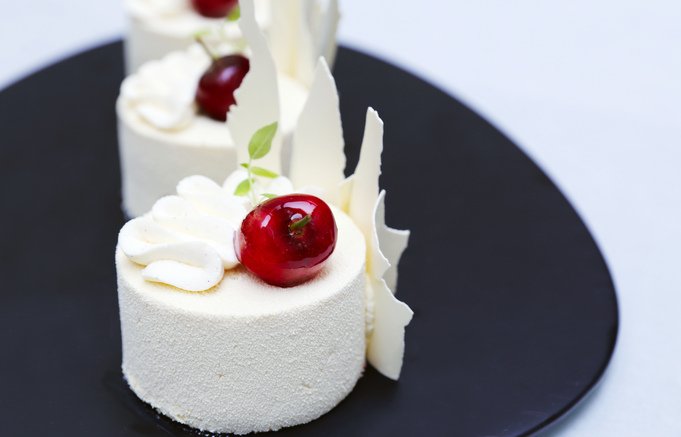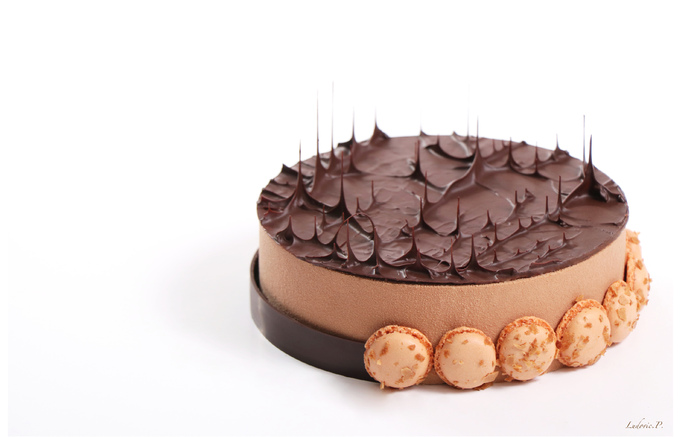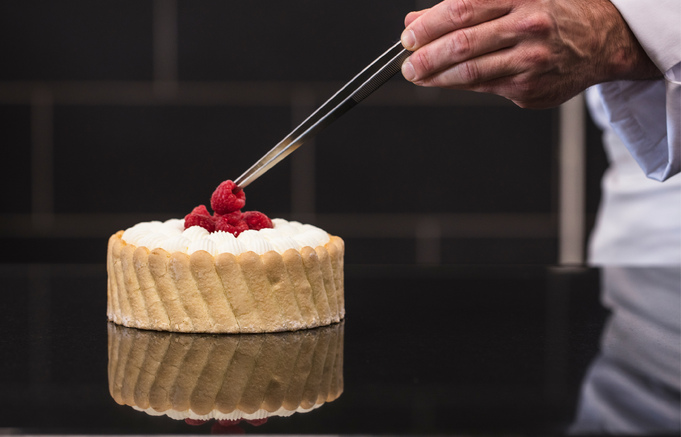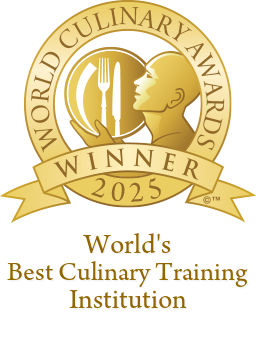Different types of pastries and mastering the art of patisserie

If you've been considering different culinary careers, you might have been looking at becoming a pastry chef. But what exactly is pastry in the culinary world, and how many different types of pastry are there? Pastry and patisserie are an important part of the culinary world, and they can provide an exciting career path for people who love baking and cooking.
In this article, we'll go over the main types of pastry and the main pastries that professional pastry chefs need to be able to make. We'll also discuss the best kind of training you can get in the pastry arts.
Introduction
Pastry chefs don't just make pastries. They also make a wide range of cakes, bread, and other baked goods. However, pastries in particular are an area that you will need to study if you want to be a pastry chef. Pastries are delicious and versatile baked treats that can be sweet or savory and enjoyed at any time of day. There are many different types of pastries, each with a unique flavor and texture. But what exactly are pastries, and where did they come from?
What are pastries?
When we look at culinary pastries and the work of pastry chefs, we have to consider a huge range of creations, including items made of different pastry types, as well as cakes, biscuits, and more.
There are five main types of pastry dough in French cuisine:
shortcrust, flaky, puff, filo, and choux. There are also more types of pastry throughout the world, as well as all the other sweet dessert items that chefs make. Each type of dough or cake base has its own distinctive properties and is used to make different types of pastries, cakes, desserts, sweets, and even savory items.
Brief history of pastries

The history of pastries is long, and it's believed that pastries and cakes were first made in ancient Egyptian times. The ancient Greeks and Romans enjoyed them too. These pastries would have been quite simple, flavored with seeds, nuts, and honey. It wasn't until medieval times in Europe that sugar was added to pasties.
Over the years, pastry ideas spread throughout the world. Different cultures all developed their own signature pastries, often using spices and other then-luxurious ingredients to make delicious variations. Pastry-making significantly evolved in the 18th century, with professional chefs making pastries for wealthy patrons and royals.
Today, people throughout the world enjoy a huge range of different pastries. Pastry-making is also popular at home, so amateur cooks can enjoy pastries more often, but many pastry types require a great deal of time, skill and training to make.
Why are pastries popular?
There are many reasons why pastries are so popular. These include:
- The wide range of different flavors and textures means there's a delicious type of pastry to suit every taste and mood
- Pastries are often portable and can be eaten on the go
- Cultural significance is attached to some pastries, which are consumed during celebrations, festivals, and religious holidays
- They are a common gift item to mark all kinds of occasions
- It can be enjoyable to make basic pastry items at home
Types of pastries by origin
With the pastry arts now adopted by cultures and countries globally, many can be easily categorized according to attributes or history. Here are some of the most common pastry types.
French pastries
France's pastries are justifiably famous, and there are many different pastries you would learn to make in a French pastry school. Many French pastries are commonly found throughout the world now, and you can buy them in most bakeries, supermarkets, and cafes. Some, however, must be made by an expert pastry chef to taste authentic.
- Croissants: These buttery crescents are one of the most famous pastries, made from layered viennoiserie pastry.
- Macarons: These meringue-based confections are usually made by experts and available in a wide range of flavors and hues.
- Éclairs: These choux pastry tubes are filled with cream and have a flavored topping.
- Pain au chocolat: This is a variation of viennoiserie pastry with pieces of chocolate inside for flavor and texture.
- Mille-feuille: Puff pastry is layered with a cream filling and usually iced. It's sometimes known as a vanilla slice or custard slice.
Italian pastries
Italian pastries are well known for their rich flavor and delicate texture, as well as their beautiful presentation. While some of these are popular across the world, some Italian pastries are hard to come by outside of specialist bakeries or restaurants.
- Cannoli: These crisp pastry tubes are filled with sweet ricotta and often topped with fruit, nuts, or chocolate.
- Tiramisu: This rich coffee-flavored dessert uses sponge fingers for its base.
- Sfogliatelle: These incorporate many thin layers of pastry for a unique texture and are often filled with sweet ricotta, almond paste, or citrus peel.
- Panettone: This is a distinctive light cake or bread often made with dried fruit.
Austrian pastries

While it is less common to find many Austrian pastries outside Austria, there are still plenty of delicious pastry types that you should know about.
- Strudel: Strudel uses layered pastry encasing a sweet filling.
- Sachertorte: This dense chocolate cake is one of the most famous Viennese desserts.
- Linzer torte: This dessert has a shortbread base and is usually topped with fruit preserves and a pastry lattice.
Danish pastries
Danish pastries are typically made from sweet laminated (rolled and folded) pastry in the viennoiserie tradition, with a wide range of fillings or toppings, though there are other kinds. Here are some of the most popular Danish pastries.
- Snegl: Better known as the cinnamon roll, these feature a cinnamon filling and sweet icing.
- Spandauer: These are circular pastries with marzipan filling and a cream or jam topping.
- Tebirkes: This flaky pastry is often made with marzipan and the result is topped with poppy seeds.
British pastries
British pastries tend to be denser than many French pastries, often incorporating shortcrust or other non-laminated pastry as an ingredient. They are often flavored with local fruit.
- Eccles cake: This is a round flaky pastry filled with currants and topped with sugar.
- Cornish pasty: This savory pastry has a crimped edge "handle" on one side, and is filled with meat and root vegetables.
- Bakewell tart: This tart uses shortcrust pastry as a base for a jam and frangipane filling.
Types of pastry by ingredients
If you want a career as a pastry chef, it's vital for you to know about the different types of pastry. There are five main types used in most common pastries, though you should also consider breads and less commonly used pastry.
Puff pastry
Puff pastry uses layers of dough and butter to create a light pastry that rises with air within it.
- Classic puff pastry: This involves folding a lump of butter into the pastry for the traditional puff pastry effect.
- Rough puff pastry: This is a quicker method where the butter is blended into the pastry dough. This does not rise as well, but it is faster, making it a valuable baking technique to know.
Shortcrust pastry
The only pastry ingredients in this are flour, fat, and water. It does not have any rising agents.
- Sweet shortcrust pastry: You can add sugar to shortcrust pastry for sweet dishes.
- Savory shortcrust pastry: Shortcrust can be used for meat or vegetable pies and pasties.
Choux pastry
This pastry dough is made with butter, water, flour, and eggs, to make a puffy, soft pastry.
- Profiteroles: These are made from small domes of choux pastry filled with cream, and often topped with a sweet icing or sauce.
- Cream puffs: This can be another name for profiteroles and can be made in various sizes.
- Churros: Churros are a Spanish dessert pastry from deep-frying choux pastry dough.
Filo pastry
Filo is a pastry made from lots of thin and unleavened layers.
- Baklava: This is a dessert made from layered filo and chopped nuts, then soaked in syrup or honey.
- Spanakopita: This is a savory dish made with cheese and spinach.
Sweet pastry
Sweet pastry is similar to shortcrust, but it often includes sugar and eggs for a softer finished product.
- Tart: This is an open pastry base often filled with fruit, custard, or various fillings.
- Pie: These have a layer of pastry over the top. You can also make savory pies with shortcrust pastry.
- Turnover: For these, the filling is placed on a sheet of pastry, which is then folded over the filling.
Bread pastry
Pastry chefs also need to know the baking process for bread-like pastry products.
- Brioche: This is enriched with eggs and butter and is sweeter than normal bread.
- Croissants: These classic pastries also have some overlap with bread.
Required skills and qualifications for pastry chefs

Pastry chefs need to be comfortable with a range of different culinary art techniques, including baking and making fillings or toppings for their signature pastry creations. You'll also need creativity and imagination to make creative and attractive pastries. There are also skills you'll need to work in any professional kitchen, such as team working, time management, and communication.
Choosing the right culinary school for pastry education
If you're struggling to choose a culinary school, you should look at the programs offered. You should ensure that you'll receive a well-rounded pastry education, including theoretical lessons on culinary science, management, and food hygiene, as well as practical experience and professional internships.
World-class pastry skills in our expert pastry degree
Our degree in French pastry combines essential techniques and training with unique placements and mentoring so you can embark on a successful culinary career
Types of pastry: conclusion
There are many types of pastry and different baking methods that pastry chefs need to know in order to make exciting and delicious creations. If you're looking for a career in the pastry arts, a culinary arts degree can help give you the skills and pastry-making resources you need. You could also look at a career in other parts of the culinary world, such as becoming a chocolatier.


